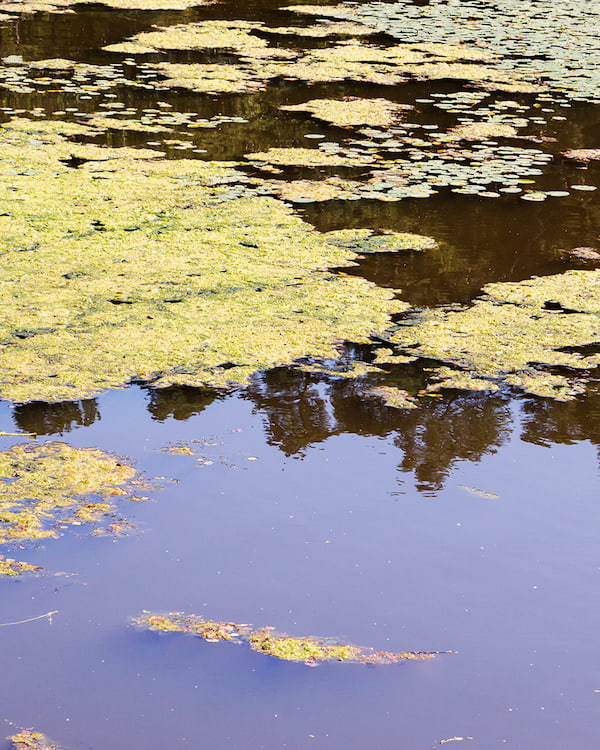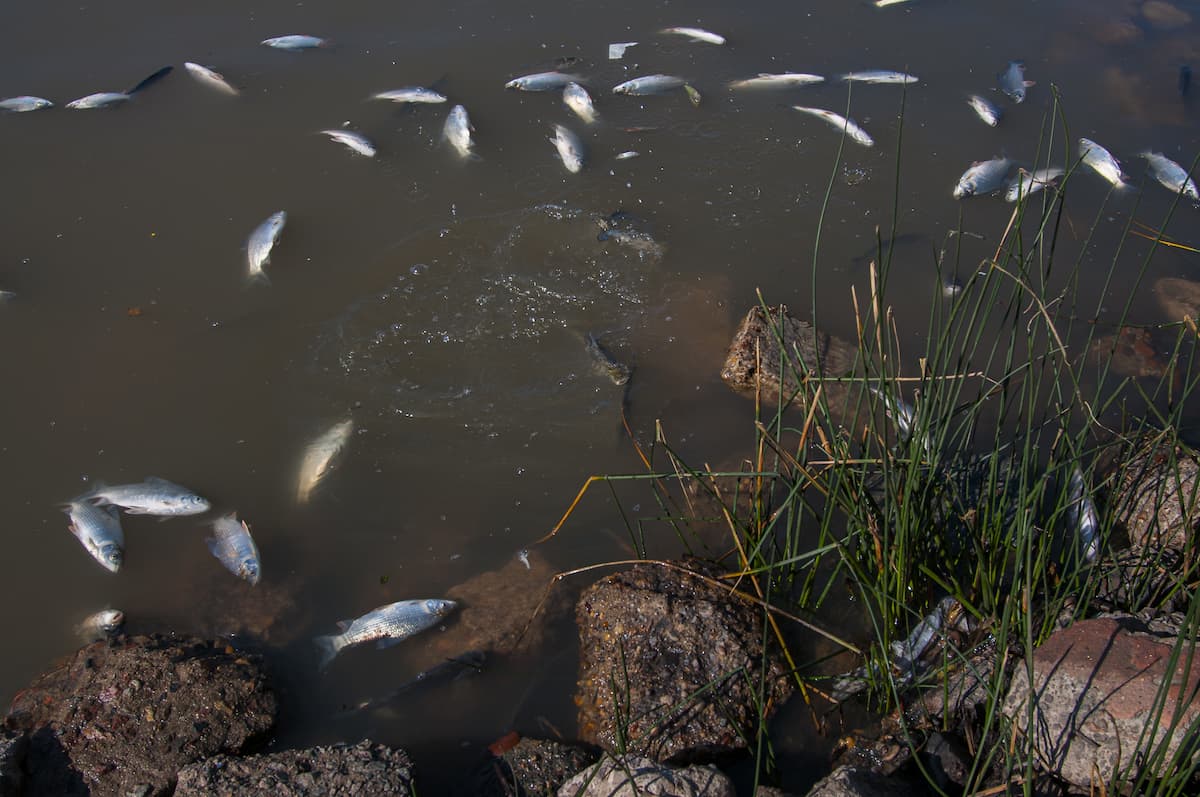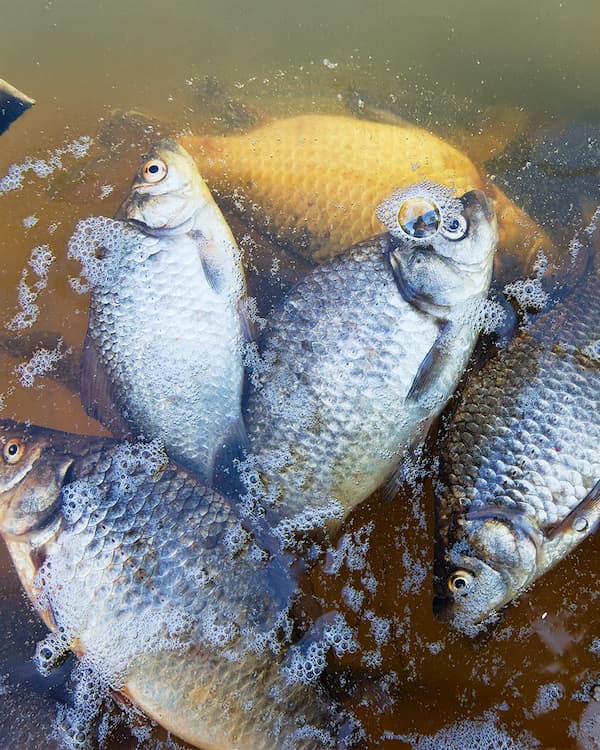Maintaining healthy oxygen levels in a pond isn’t just important — it’s essential. When oxygen drops too low, aquatic life suffers, water quality deteriorates, and entire ecosystems can become imbalanced. But how do you recognize the early signs of low oxygen in ponds?

In this article, we’ll explore the most common symptoms, what can low oxygen in a pond lead to, and how Pond Guru can help restore and maintain oxygen levels through effective pond aeration solutions.
Before spotting the signs, it’s important to understand why oxygen levels might drop in the first place. Here are some of the most common culprits:
Organic matter build-up, such as decaying leaves or waste
Before spotting the signs, it’s important to understand why oxygen levels might drop in the first place. Here are some of the most common culprits:
Organic matter build-up, such as decaying leaves or waste

One of the most immediate and visible signs of low oxygen in ponds is fish gasping for air at the water’s surface, especially early in the morning. This desperate behavior indicates oxygen depletion at deeper levels, forcing fish to seek what little oxygen remains near the surface.
If this occurs regularly, it’s a red flag — immediate pond aeration or intervention is needed to avoid fish kills.
Fish that seem slow, inactive, or reluctant to feed may be suffering from oxygen stress. Low oxygen levels reduce their energy and metabolic efficiency, making them sluggish and vulnerable to disease.
For property managers and pond owners, this is one of the most overlooked signs of low oxygen in a pond.

Another telltale sign of poor water quality and low oxygen is a strong, unpleasant smell. Anaerobic bacteria begin to thrive in oxygen-depleted zones, producing gases like hydrogen sulfide — the cause of that unmistakable “rotten egg” odor.
This is more than just a nuisance. It’s a sign that your pond’s ecosystem is breaking down, and corrective action should be taken immediately.
Cloudy pond wateroften signals a lack of oxygen and poor circulation. Without sufficient oxygen, beneficial aerobic bacteria cannot break down organic matter effectively, leading to murky water and excessive nutrient build-up — conditions that only worsen over time.
If you’re searching for ways to maintain a clear pond water system, solving the oxygen problem is often the first step.
One of the most severe outcomes of prolonged low oxygen levels is a sudden die-off of fish or other pond life. These events can be tragic and costly to fix — but they are preventable with proactive monitoring and effective pond aeration strategies.
Pond Guru recommends regular inspection of your pond or lake, especially during hot summer months when oxygen depletion can happen rapidly.
Left unaddressed, low oxygen can trigger a cascade of negative effects:
That’s why pond aeration is a foundational service offered by Pond Guru. Proper aerationhelps maintain oxygen balance, prevents stagnation, and supports overall pond health.

Aeration introduces oxygen into the water column, disrupting stratification and increasing circulation. Whether it’s a small backyard pond or a large HOA-managed lake, Pond Guru can install aeration systems tailored to your pond’s size and condition.
We offer floating fountains, diffused aerators, and custom solutions for long-term oxygenation and clarity.
Pond Guru serves private homeowners, HOA boards, golf courses, and commercial properties with expert-level pond and lake management. Our team can conduct a site visit, assess water quality, and recommend the right aeration system or treatment plan.
We don’t just fix symptoms — we get to the root of the problem.
Fish gasping at the surface, foul odors, and cloudy water are often the first noticeable symptoms.
Yes. Algae consume oxygen at night, which can drastically reduce dissolved oxygen levels, especially in stagnant ponds.
Aeration increases dissolved oxygen, improves water circulation, and reduces the buildup of organic waste and harmful gases.
Long-term effects include fish die-offs, algae blooms, water quality decline, and foul odors.
Absolutely. Our team provides site visits, installs aeration systems, and offers ongoing support to ensure your pond stays healthy and balanced.